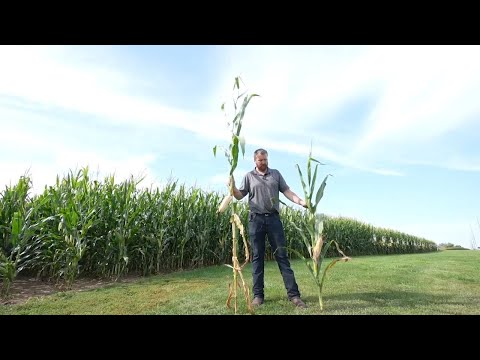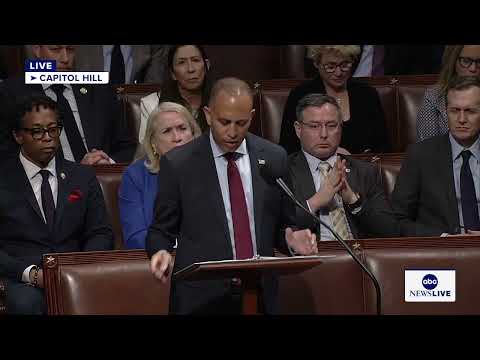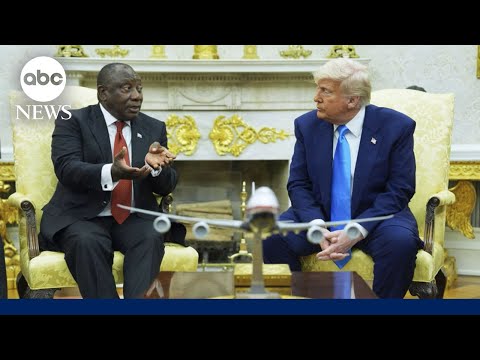(23 Sep 2024)
RESTRICTION SUMMARY:
ASSOCIATED PRESS
Wyoming, Iowa – 17 September 2024
1. Corn tassel
++PARTIALLY COVERED++
2. SOUNDBITE (English) Scott McFetridge, The Associated Press:
“Farmers on about 30,000 acres throughout the Midwest are testing a new kind of corn. It’s called short corn, and you can see why. It’s about half the size is what we would normally see out on farms throughout the U.S. The short corn has some big advantages. The biggest one is you can withstand wind events better. We’ve been having a lot of those in the Midwest. The second thing is you can just grow more of it on the same amount of land. And that’s especially important at a time where farmers are getting some really pretty poor prices for the corn that they grow.”
3. Wide view of corn field
4. SOUNDBITE (English) Cameron Sorgenfrey, farmer:
“The ear heights a lot lower on her short corn, which is where most of the way it’s at. So that’s keeping us a lot less chance of green snap or lodging, especially late season. We feel a lot more comfortable with leaving this hybrid out in the field a lot longer compared to this big, tall, lengthy one.”
5. Wide view of grain bins
++PARTIALLY COVERED++
6. SOUNDBITE (English) Cameron Sorgenfrey, farmer:
“We had the derecho come through in 2020, it was you know, it changed a lot of people’s lives. The next morning, when you woke up or that afternoon when you saw it and drove around, it was a real mess. Lot of stuff destroyed. And most of the corn crop was pretty well flat.”
7. Wide view of farmhouse
8. SOUNDBITE (English) Cameron Sorgenfrey, farmer:
“Nebraska had an event last year where their short corn was pretty much 90 to 100% stand and the tall corns beside it were 30 to 40.”
8. Close up on ear of corn
++PARTIALLY COVERED++
9. SOUNDBITE (English) Cameron Sorgenfrey, farmer:
“I feel like the last two years it’s been so much better looking corn out of the gate. It it’s so much more denser with the extra population that, you know, it helps helps on that. And not only that, it grows the same till row closed. So it helps with weed control too, because you have more plants out there and less sunlight hitting the ground.”
10. View of grain bins
++PARTIALLY COVERED++
11. SOUNDBITE (English) Cameron Sorgenfrey, farmer:
“We’re in a real low corn market. I think, you know, some of our our best yields are probably gonna come off of our short corn where we push that envelope a little bit more on fertilizer and on population. We just have more ears out there, which is going to be great.”
12. Short corn sign
++COVERED++
13. SOUNDBITE (English) Cameron Sorgenfrey, farmer:
“Because you drive across the Midwest, you know, maybe in another seven, eight, ten years, you’re going to see a lot more of this out there.”
14. Metal welcome sign
15. Cameron standing with stalks of corn
STORYLINE:
Taking a late-summer country drive in the Midwest means venturing into the corn zone, snaking between 12-foot-tall green, leafy walls that can seem to block out nearly everything other than the sun and an occasional water tower.
The skyscraper-like corn is a part of rural America as much as cavernous red barns and placid cows.
But soon, that towering corn might become a miniature of its former self, replaced by stalks only half as tall as the green giants that have dominated fields for so long.
The smaller plants also let farmers plant at greater density, so they can grow more corn on the same amount of land, increasing their profits. That especially helpful as farmers have endured several years of low prices that are forecast to continue.
Find out more about AP Archive: http://www.aparchive.com/HowWeWork
Twitter: https://twitter.com/AP_Archive
Facebook: https://www.facebook.com/APArchives
Instagram: https://www.instagram.com/APNews/
You can license this story through AP Archive: http://www.aparchive.com/metadata/youtube/9059f3ecf6b24d55967bec5a04e19d0b
Author: AP Archive
Go to Source
News post in September 28, 2024, 3:05 pm.
Visit Our Sponsor’s:
News Post In – News





